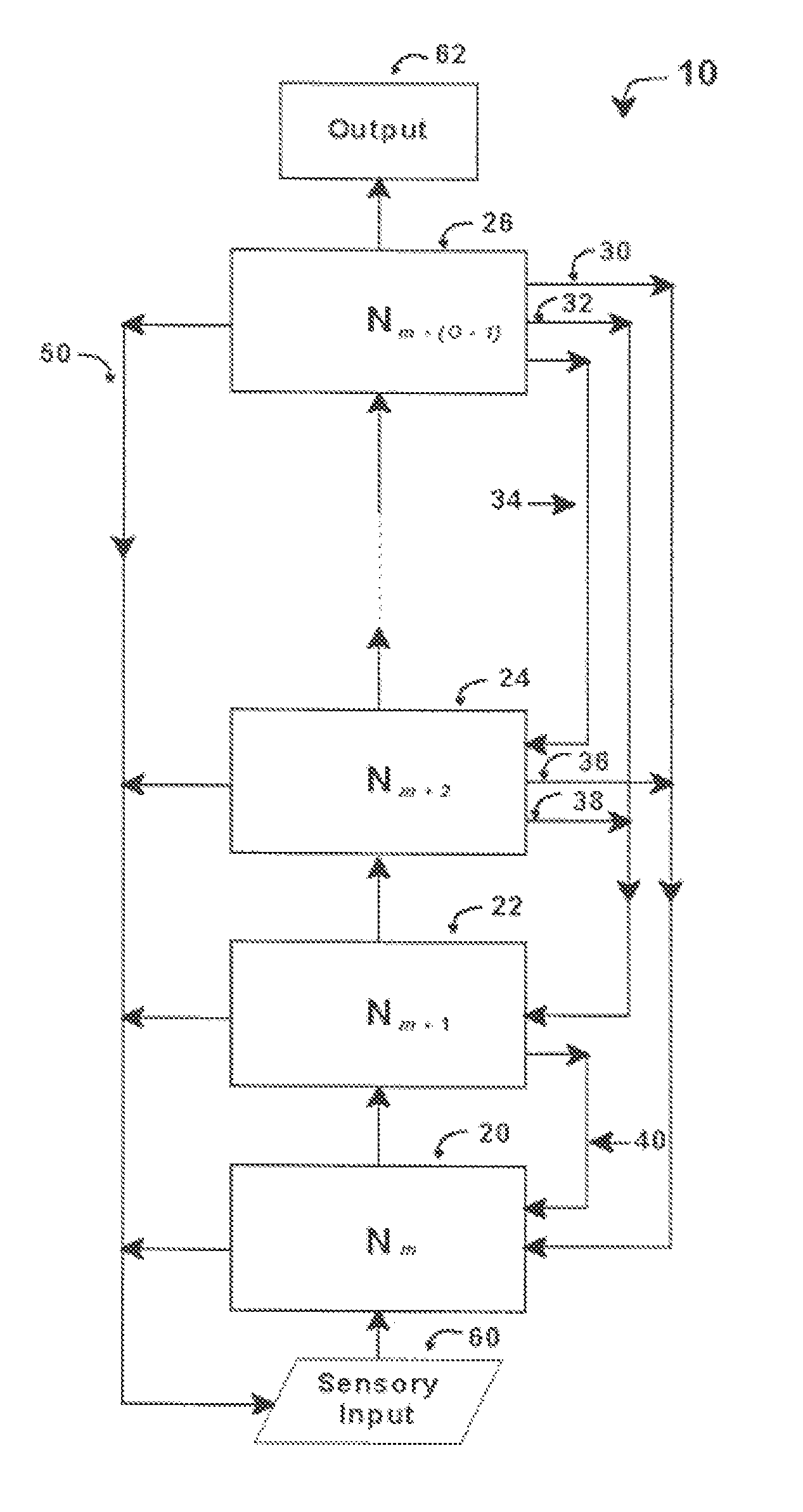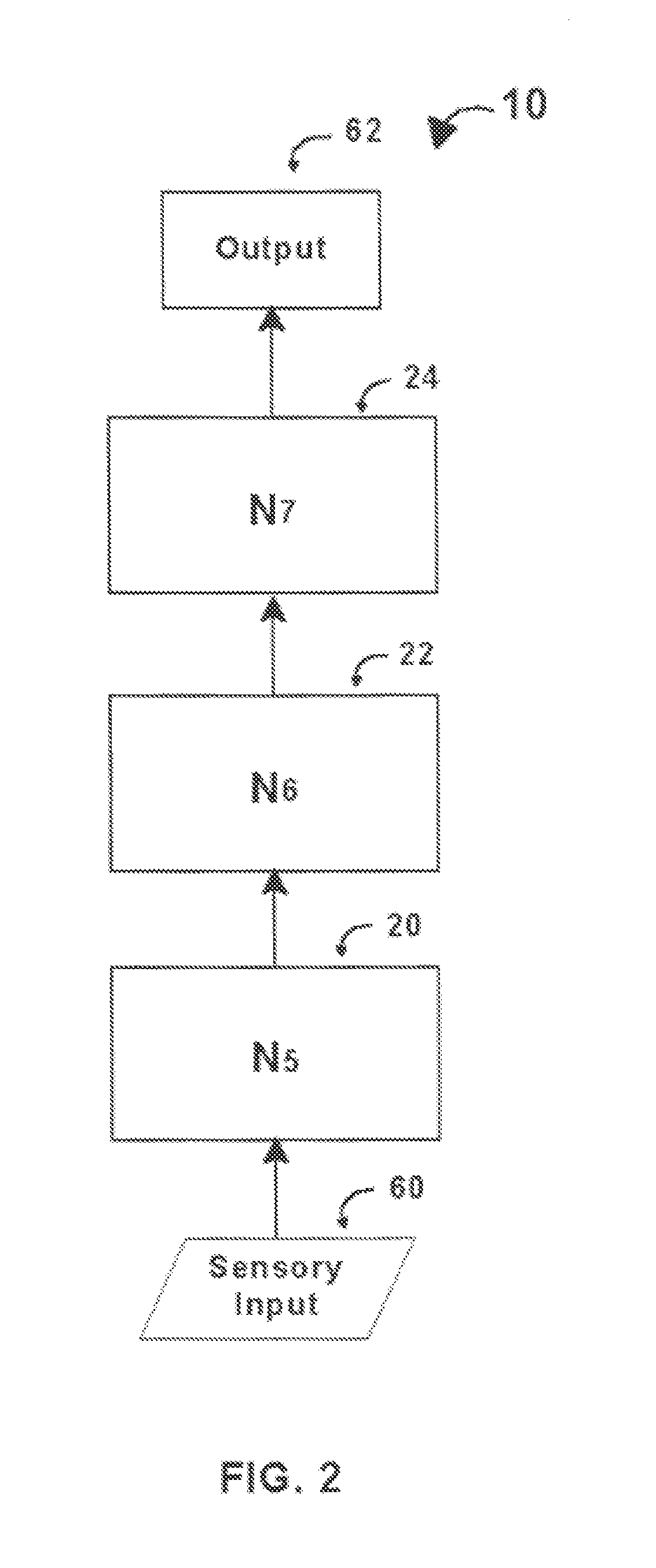Intelligent control with hierarchal stacked neural networks
a neural network and intelligent control technology, applied in adaptive control, instruments, diagnostic recording/measure, etc., can solve the problems of lack of intelligence of expert systems, inability to perform many of the complex tasks that humans perform easily, and inability to learn. to achieve the effect of increasing complexity and increasing complexity
- Summary
- Abstract
- Description
- Claims
- Application Information
AI Technical Summary
Benefits of technology
Problems solved by technology
Method used
Image
Examples
first detailed embodiment
An Intelligent Control System to Detect Shoplifting
[0066]A store is monitored by video cameras that record information from every area of the store. The input from the cameras is broken into physical slices (input vectors), which are sampled at one-second intervals for changes in light intensity. A rule-based system calculates changes in light intensity. Delta values, Dni, for n=1, . . . , n, and i=1, . . . , k, are based on the differences in light intensity between time samples, Dn−1,i and Dn,i. The delta values are the input signals for the first neural network in the hierarchical stack.
[0067]Referring to FIG. 4, an intelligent control system to detect shop lifting 100 comprises a hierarchical stack of five architecturally distinct neural networks 110, 112, 114, 116, and 118. Each neural network 110, 112, 114, 116 and 118 performs processing actions associated with a stage / order from the model described in Table 1.
[0068]The first neural network in the hierarchical stack, neural n...
second detailed embodiment
An Intelligent Control System that Directs Customer Calls to the Correct Department in a Large Organization
[0077]This system answers a customer's telephone call and determines where it should be directed within the organization, based on the caller's oral statements and responses to questions asked by the system. The system is able to achieve the language proficiency of a three year-old and ask simple questions. The input to the system are the customer's utterances. These are first processed in a front-end recognition system that translates the utterances into words, measures the time intervals between words, and removes articles, prepositions, and conjunctions.
[0078]Referring to FIG. 5, an intelligent control system 200 that directs customer calls to the correct department in a large organization comprises a stack of four (4) architecturally distinct, ordered neural networks 210, 212, 214, and 216. Each neural network 210, 212, 214, and 216 performs processing actions associated wi...
PUM
 Login to View More
Login to View More Abstract
Description
Claims
Application Information
 Login to View More
Login to View More - R&D
- Intellectual Property
- Life Sciences
- Materials
- Tech Scout
- Unparalleled Data Quality
- Higher Quality Content
- 60% Fewer Hallucinations
Browse by: Latest US Patents, China's latest patents, Technical Efficacy Thesaurus, Application Domain, Technology Topic, Popular Technical Reports.
© 2025 PatSnap. All rights reserved.Legal|Privacy policy|Modern Slavery Act Transparency Statement|Sitemap|About US| Contact US: help@patsnap.com



